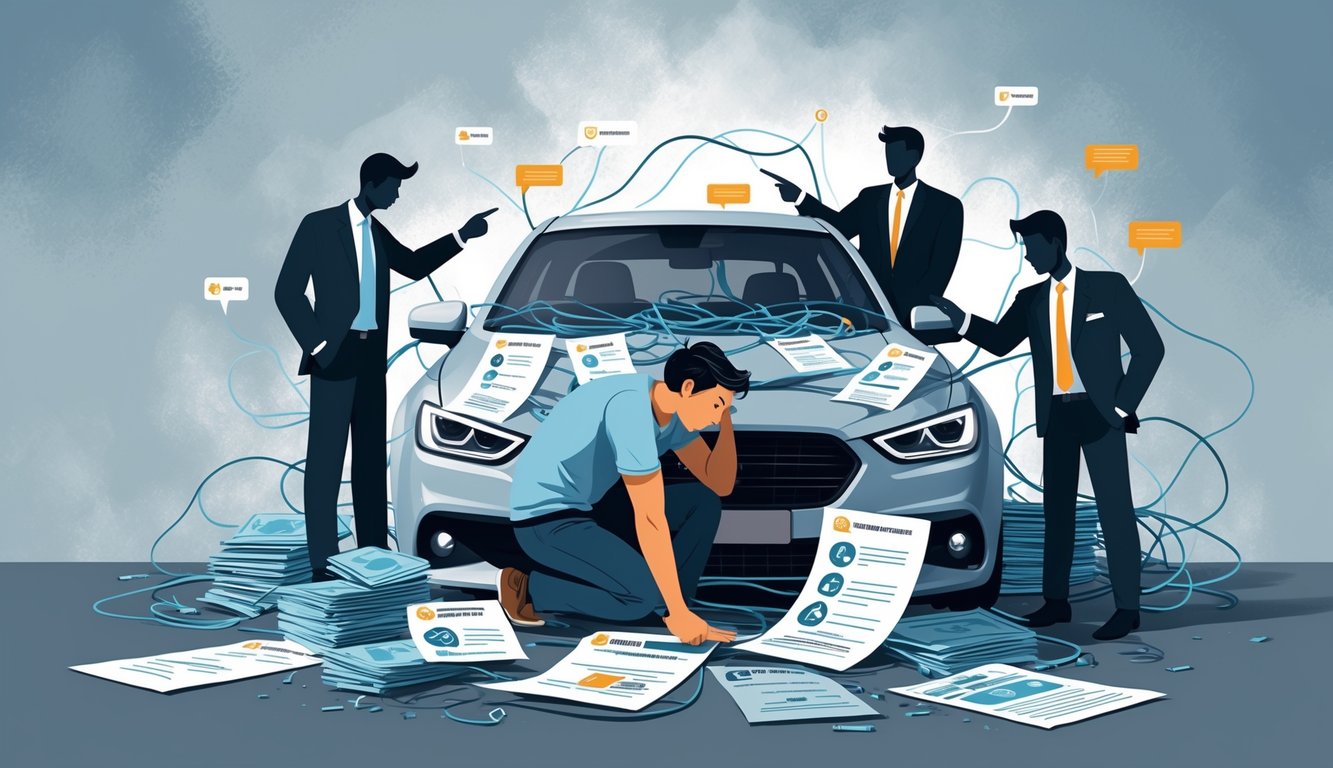
Frequently Asked Questions
Seriously, the traps are everywhere—deductibles hiding behind “bargain” premiums, or some clause nobody reads until it’s too late. I’ve spent hours squinting at policies, just annoyed—why do they always twist the rules so you end up paying more?
What are some common mistakes to watch out for when choosing an auto insurance deductible?
You’d think it’s obvious, but picking the “standard” $500 or $1,000 deductible just because everyone else does? I did that once, saved like $10 a month, then got nailed by a fender-bender and realized I was basically gambling I’d never need to file a claim. Insurance Information Institute says only 6% of drivers file a claim each year—doesn’t matter until you’re that 6%.
And don’t get me started on fine print—some policies split deductibles by damage type. My brother’s “comprehensive” plan had a $250 windshield deductible, but $1,000 for theft. Why is that even allowed?
Marie next door says she never would’ve picked a high deductible if her agent hadn’t said, “Most people never file claims.” Agents have sales goals, not psychic powers.
Can you share tips on how to avoid overpaying for car insurance because of deductible pitfalls?
First year I owned my car, I switched insurance twice, chasing “the cheapest.” Turns out, the low premium came with a $2,000 deductible the last company hid in the fine print. Nobody warned me that’d wreck my budget if someone tapped me in a parking lot.
Always compare the whole quote, not just the monthly. Some companies toss in “disappearing deductible” gimmicks, then jack up your rates after a small claim. State Farm agents get this question all the time—“Why did my rate go up after my $600 claim when I picked the ‘safe driver’ plan?” Because your risk profile resets, that’s why.
Nobody loves reading policy PDFs, but just call and ask: “What’s the most I could pay out of pocket for a claim?” The number you see online isn’t always what you’ll owe after an accident.
How do insurance companies use deductibles to influence claim behavior and costs?
Insurance companies want you to have “skin in the game.” Deloitte found claims drop almost 20% when people have deductibles over $1,000. Does that mean fewer accidents? Of course not—it just means more people pay for repairs themselves.
I told a client once—single dad, old Honda, budget’s tight—just stick to the $500 deductible. His last insurer bumped it to $2,500, hoping he’d never call for a minor scrape. So he just drove around with the dents.
Basically, insurers crank up deductibles to keep you from calling for anything small. You think you’re saving, but really, you’re just eating the cost yourself.
What should drivers know about deductible clauses that could increase out-of-pocket expenses?
Random client emails me: “Why is my deductible double for hail damage?” Surprise! There are “split deductibles” everywhere. Companies like Progressive or Allstate love to add special hurricane, hail, or hit-and-run deductibles, and they’re always buried deep in the policy.
I saw one policy where my friend paid two deductibles when her garage door fell on her car during a storm—property and comprehensive, both counted. Total nonsense.
Never trust the summary page. Dig into “Exclusions and Exceptions” and look for “separate deductible applies” or “per occurrence”—that’s where the pain lives.
Could you explain the impact of a high deductible on my yearly insurance premiums and financial protection?
A USAA rep literally told me, “Raise your deductible, lower your premium—simple math.” But only up to a point. Bankrate says bumping your deductible from $500 to $1,000 saves you maybe 7-10% a year—not the 30% people hope for.
I raised mine to save $100 a year once. Someone sideswiped me, and my car sat in the shop for weeks while I scraped together $1,000. The stress? Absolutely not worth it.
Most people will tell you: If you don’t have the cash for the higher deductible, you’re just one accident away from a financial mess. Insurance is supposed to help, not just make your payments smaller.
Are there specific scenarios where opting for a lower deductible might actually save money in the long run?
Okay, so here’s the thing—if you’re driving in the city, parking on the street, or, honestly, just living with teenagers who treat the car like it’s indestructible, why would you even flirt with a high deductible? I mean, I watched my neighbor’s family—nice folks, total chaos—get hit with three claims in, what, like eight months? Their supposedly “smart” $1,500 deductible just vaporized their savings. I’m not even exaggerating.
Clark Howard (yeah, that guy who’s always yelling about not wasting your money) basically says if you don’t have at least a grand sitting around, forget the high deductible. You’ll just end up putting repairs on a card and paying for them twice. I know, monthly premiums are annoying and make you want to scream, but when stuff goes sideways—and let’s be honest, it always does—you’ll be weirdly glad you coughed up the extra cash.
Honestly, I used to roll my eyes at my ultra-cautious friend who picks the lowest deductible every time, but maybe she’s onto something. At this point, with my luck? I’m not taking chances.
